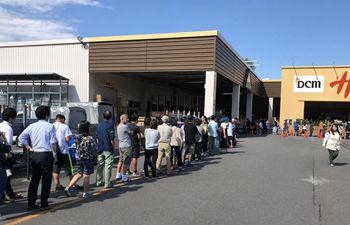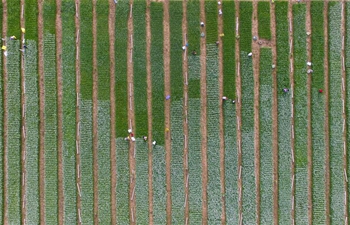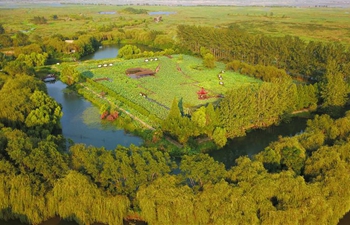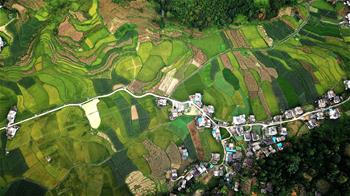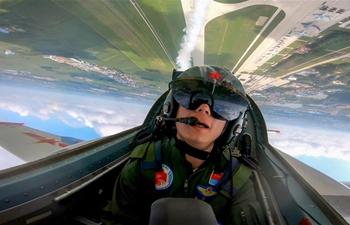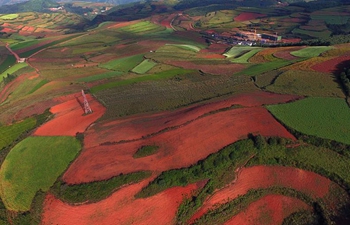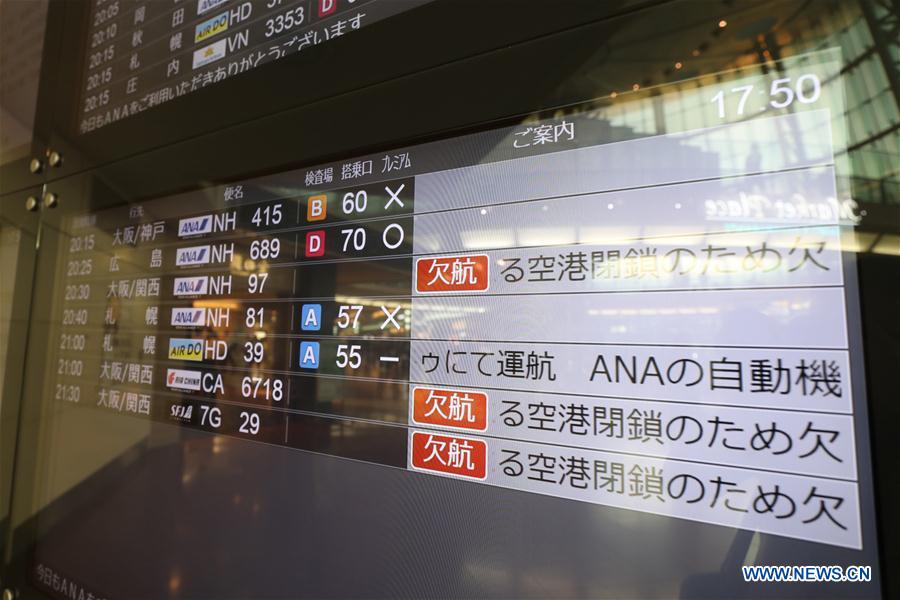
Flights to Kansai are shown cancelled on the electronic board in the wake of Typhoon Jebi at Haneda airport in Tokyo, Japan, on Sept. 5, 2018. Death toll rose to 11 on Wednesday after Typhoon Jebi, the most powerful hitting Japan in 25 years, struck west Japan and wreaked havoc on infrastructures and transportation systems on Tuesday. (Xinhua/Du Xiaoyi)
TOKYO, Sept. 5 (Xinhua) -- Death toll has risen to 11 on Wednesday after Typhoon Jebi, the most powerful typhoon that made landfall in Japan in 25 years, struck western Japan and wreaked havoc on infrastructure and transportation systems one day before.
More than 400 people had been injured, and thousands of passengers that had been stranded at the Kansai International Airport in Osaka were evacuated on Wednesday, according to local reports.
Kansai International Airport, Japan's third-largest, located on a man-made island in Osaka bay, was flooded on Tuesday owing to the typhoon, with the only way out for passengers being a bridge with road and rail access connecting the terminal to the main island.
The bridge, however, became stricken as the powerful typhoon ripped a tanker from its moorings and rammed it into the bridge, causing great damages to both and leading to 5,000 people being forced to spend a hellish night at the airport.
Of the 5,000, 3,000 were passengers and 2,000 were airport staff. The evacuations by boat began on Wednesday morning but will continue through Thursday, airport officials said.
According to China's consulate-general in Osaka, among the people stranded at the airport in Osaka, some 750 were Chinese citizens.
As of 9:00 p.m. local time, some 550 Chinese citizens had been evacuated to Osaka City, according to the consulate-general.
The consulate-general is still providing assistance to the evacuation work of the remaining stranded passengers.
It also warned tourists and passengers to pay attention to news releases and make proper adjustments to their itineraries.
Japan has been battered by a number of typhoons recently, with western regions being particularly hard hit with 220 people killed in July alone.
The powerful typhoon on Tuesday has heavily disrupted transportation services, causing flights and rail services to be canceled, as well as some commercial facilities' operations.
More than 200 flights were canceled at the airport on Wednesday with around 30,000 people affected, airline operators said.
The number of flights affected is expected to further rise as the Kansai International Airport could remain closed for as long as a week, according the airport's authorities.
Local economy is also expected to suffer a blow as the airport is a major hub for tourists and for shipping cargo overseas and manufacturers had to find alternatives for transportation while the airport remains closed.
In prefectures in western Japan served by Kansai Electric Power Co., some 357,000 households were still without power as of 7:00 p.m. Wednesday.
Retailers and restaurant chains have been forced to close some of their outlets due to the power outage in the aftermath of the typhoon.
In Kyoto, some 160 elementary school pupils have been evacuated by 8:00 p.m. after being stranded in a facility during a school trip after typhoon brought down trees and blocked the surrounding roads on Tuesday.
